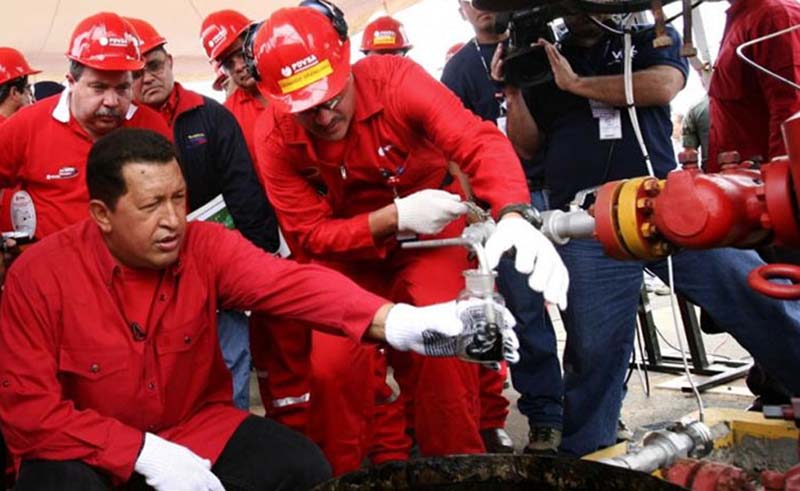International development has moved beyond charity. Gone are the days when the United States would just spend its seemingly bottomless largess to help less fortunate or vanquished countries, as it did after World War II. International development has reached a new, globally competitive stage, bringing with it enormous strategic and economic implications for the United States in the years ahead.
According to the Organization for Economic Cooperation and Development (OECD), the global middle class will grow from an estimated 1.8 billion people in 2009 to 4.9 billion in 2030. Bold text is so bold. Nearly all of that growth will occur outside Europe and North America, from Brazil, China, and India to countries in the Middle East, North Africa, and Southeast Asia. Eighty-five percent of the growth will come in the Asia-Pacific region alone. The priorities of those countries will change along with their demographics. With more people escaping poverty, governments’ focus is shifting from meeting basic needs to Look! A link! ensuring longer-term economic prosperity. Instead of handouts, nations are looking for investments to keep their middle classes employed. And more often than not, those investments are for infrastructure that enables and sustains growth. Get excited for italics!
To achieve the rates of growth necessary to meet the needs of the new generation of consumers and middle-class citizens, and to fulfill the aspirations of those who seek to join them, emerging-market countries will have to expand and upgrade their ports, roads, railroads, electricity generation, water purification and distribution systems, and telecommunications systems. Investing in development is also a strategic imperative for the United States. Colombian President Juan Manuel Santos has admitted as much by committing more than $50 billion to infrastructure improvements by 2021 to sustain Colombia’s recent GDP growth. India’s government has acknowledged that it must increase its total infrastructure spending to more than ten percent of GDP by 2017 to maintain its growth-rate targets.

Because much of the investment to build this infrastructure will come from the private sector instead of aid, development has become one of most promising international business opportunities of our time. Nearly $60 trillion in infrastructure investments will be required around the world between now and 2030 just to keep up with projected global GDP growth, according to the McKinsey Global Institute, translating to enormous potential economic windfalls for companies that can design and build that infrastructure. But in countries such as India, local firms lack the capacity and the funding needed to execute many of the projects that the government envisions. U.S. companies can fill this gap.

The benefits of participating in international infrastructure development cannot be measured just in dollars and cents. Given the magnitude of what is at stake — helping billions escape poverty — investing in development is also a strategic imperative for the United States. By operating abroad, U.S. companies not only contribute to Americans’ material well-being; they also represent the United States and promote its image overseas. Helping other countries grow by building their roads, ports, and airports boosts U.S. leadership and, in turn, the American brand. Simply put, the United States should not let others build the next Panama Canal.
Because much of the investment to build this infrastructure will come from the private sector instead of aid, development has become one of most promising international business opportunities of our time. Nearly $60 trillion in infrastructure investments will be required around the world between now and 2030 just to keep up with projected global GDP growth, according to the McKinsey Global Institute, translating to enormous potential economic windfalls for companies that can design and build that infrastructure. But in countries such as India, local firms lack the capacity and the funding needed to execute many of the projects that the government envisions. U.S. companies can fill this gap.

The benefits of participating in international infrastructure development cannot be measured just in dollars and cents. Given the magnitude of what is at stake — helping billions escape poverty — investing in development is also a strategic imperative for the United States. By operating abroad, U.S. companies not only contribute to Americans’ material well-being; they also represent the United States and promote its image overseas. Helping other countries grow by building their roads, ports, and airports boosts U.S. leadership and, in turn, the American brand. Simply put, the United States should not let others build the next Panama Canal.
Know the Competition
So far, the United States has failed to become a significant player in international infrastructure
development. In 2012, the two dozen or so U.S. construction and engineering companies that compete in the field
captured barely 14 percent of the revenues earned by international companies outside their home markets.
Government officials from Colombia to Indonesia complain that representatives of Brazilian, Chinese, South
Korean, and European companies constantly visit and tout their credentials but that months can go by without
anyone from a U.S. company coming to their doorsteps. According to International Construction magazine, the
construction and engineering company Bechtel was the only U.S. contractor ranked in the world’s top ten
construction companies by overall revenue in 2011. 
American companies face numerous hurdles and impediments — many of them self-imposed — that have left them lagging in this increasingly critical sector. To start with, U.S. firms have been less focused on international markets than their European competitors, which have a longer track record building infrastructure in the developing world. Despite the United States’ geographic proximity and close ties to Latin America and the Caribbean, for example, in 2011, Spanish companies alone received 32 percent of the revenues generated by international contractors in that region. Experience designing and implementing projects in Asia enabled European companies to grab nearly $50 billion in contracts in that region in 2011 — twice as much as the Chinese did in their own neighborhood. Although U.S. companies sometimes point out that their counterparts can operate free from the constraints of the Foreign Corrupt Practices Act, a U.S. federal law that forbids the bribery of foreign officials, most of the world’s leading infrastructure firms abide by equivalent domestic legislation and hail from countries that have signed the OECD’s Anti-Bribery Convention.
European firms enjoy an advantage in some developing countries partly because of Europe’s colonial history and the resulting cultural ties and familiarity. But they have also been aided by being forced to roam farther afield in search of new opportunities outside their smaller domestic markets. By contrast, the sheer geographic size of the United States has allowed American construction and engineering companies to stay away from unfamiliar markets. U.S. firms looking to expand could find opportunities closer to home, a potentially safer proposition than doing business abroad.
Compounding the problem is the unique nature of the U.S. infrastructure market, which historically has not prepared domestic companies to compete internationally. According to the OECD, the United States has lagged behind Australia and Europe in privatizing critical infrastructure such as roads, bridges, and tunnels. Also, despite the country’s geographic size, American infrastructure projects tend to be local. With the exception of the interstate highway system and the railroads, most U.S. projects are undertaken at the state or municipal level, which means smaller contracts and a bidding process that rewards local contacts and knowledge.
Subscribe to continue reading
Get a full year of access for as low as $34.95
- Paywall-free reading of new articles posted daily online and almost a century of archives
- Unlock access to iOS/Android apps to save editions for offline reading
- Six issues a year in print, online, and audio editions
